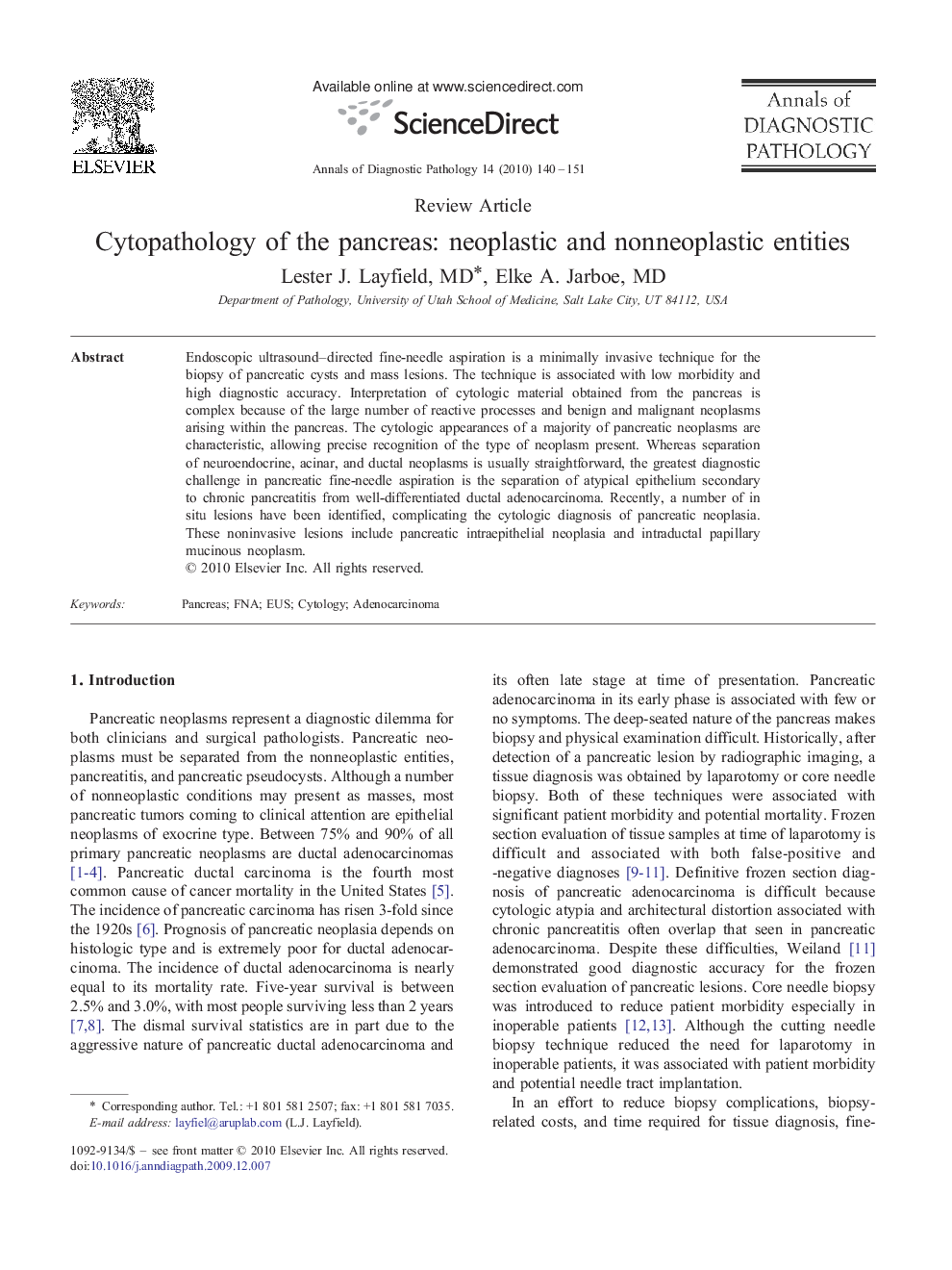| Article ID | Journal | Published Year | Pages | File Type |
|---|---|---|---|---|
| 4130131 | Annals of Diagnostic Pathology | 2010 | 12 Pages |
Endoscopic ultrasound–directed fine-needle aspiration is a minimally invasive technique for the biopsy of pancreatic cysts and mass lesions. The technique is associated with low morbidity and high diagnostic accuracy. Interpretation of cytologic material obtained from the pancreas is complex because of the large number of reactive processes and benign and malignant neoplasms arising within the pancreas. The cytologic appearances of a majority of pancreatic neoplasms are characteristic, allowing precise recognition of the type of neoplasm present. Whereas separation of neuroendocrine, acinar, and ductal neoplasms is usually straightforward, the greatest diagnostic challenge in pancreatic fine-needle aspiration is the separation of atypical epithelium secondary to chronic pancreatitis from well-differentiated ductal adenocarcinoma. Recently, a number of in situ lesions have been identified, complicating the cytologic diagnosis of pancreatic neoplasia. These noninvasive lesions include pancreatic intraepithelial neoplasia and intraductal papillary mucinous neoplasm.
